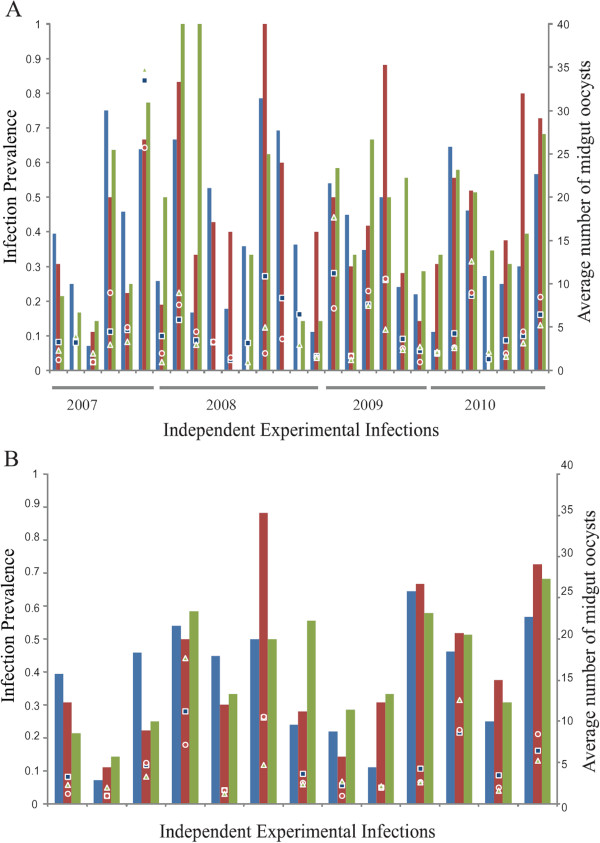Figure 2.
Infections display wide variation but no tendency of difference between Anopheles gambiae s.l. population subgroups. Values for Plasmodium falciparum infection prevalence (bars, primary y-axis) and oocyst intensity (points, secondary y-axis) were calculated for: A. all 29 experimental infections and B. only the subset of 13 most representative infections. In both A and B, data for A. arabiensis are shown as blue bars and blue squares, data for A. gambiae s.s. M form as red bars and red circles and S form as green bars and green triangles. Note that for seven infections shown in 2A, one of the population subgroups has an infection prevalence of 0%, but all population subgroups are represented by ≥1 mosquito in all 29 infections. Population groups within an infection display indistinguishable values for oocyst prevalence and intensity (see Results), and visual inspection of the bars indicates the absence of even a tendency of difference across the population groups. Examination of the 13 most representative infections indicates that, consistent with the statistical analysis (see Results), there is less apparent variation among population subgroups when they are compared within the same infection.

